The eating continues…
Night Markets
Night markets are a must-do when in Taiwan. So, imagine our frustration when jet lag and rain prevented us from going during our 2019 visit. This time we vowed to over-correct that regret, and hit up five night markets over 8 days: 臨江街 Linjiang, 饒河街 Raohe, 南機場 Nanjichang, 高雄六合 Liuhe (in Kaohsiung), 寧夏 (Ningxia). We went full tourist mode and tried lots of different street foods, the most notable being:
- The kids fell in love with skewered meats and torched steak cubes, and asked for those at every night market
- We got to try 地瓜球 di gua qiu (fried yam balls), 木瓜牛奶 (papaya milk), and 龍珠 long zhu (octopus mouth) for the very first time
- We shared a tasty 豬血糕 zhu xie gao (pork blood rice cake), a Taiwanese classic that I never liked before
- A steak. Not the wagyu-on-white-tablecloth kind but the Taiwanese hot plate variety. I had always wanted to eat this at a night market
- 肉圓 rou yuan (literally “meat ball” but there’s a lot of starch on the outside). One of those snack foods that you should only say in the Taiwanese pronunciation. I had only had it a handful of times ever, but considered it among my favorite specialties in Taiwan. Hong and I shared one and she came to love it, too
- 臭豆腐 chou dou fu (stinky tofu). We got this at every single night market. The most memorable was in Kaohsiung
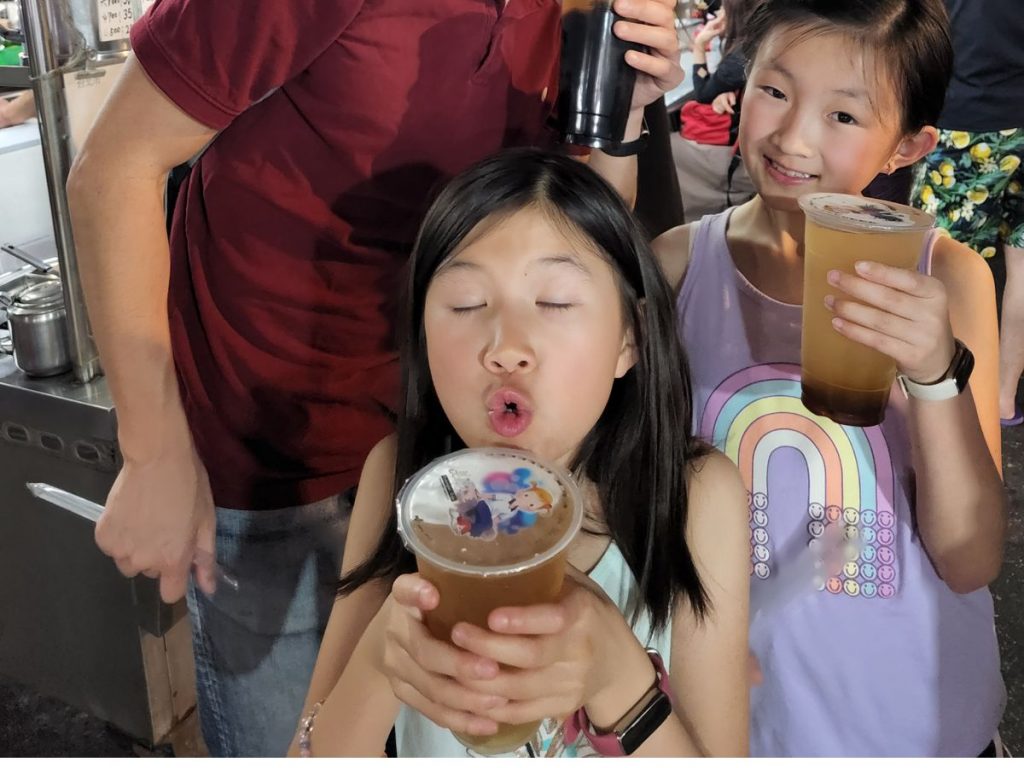
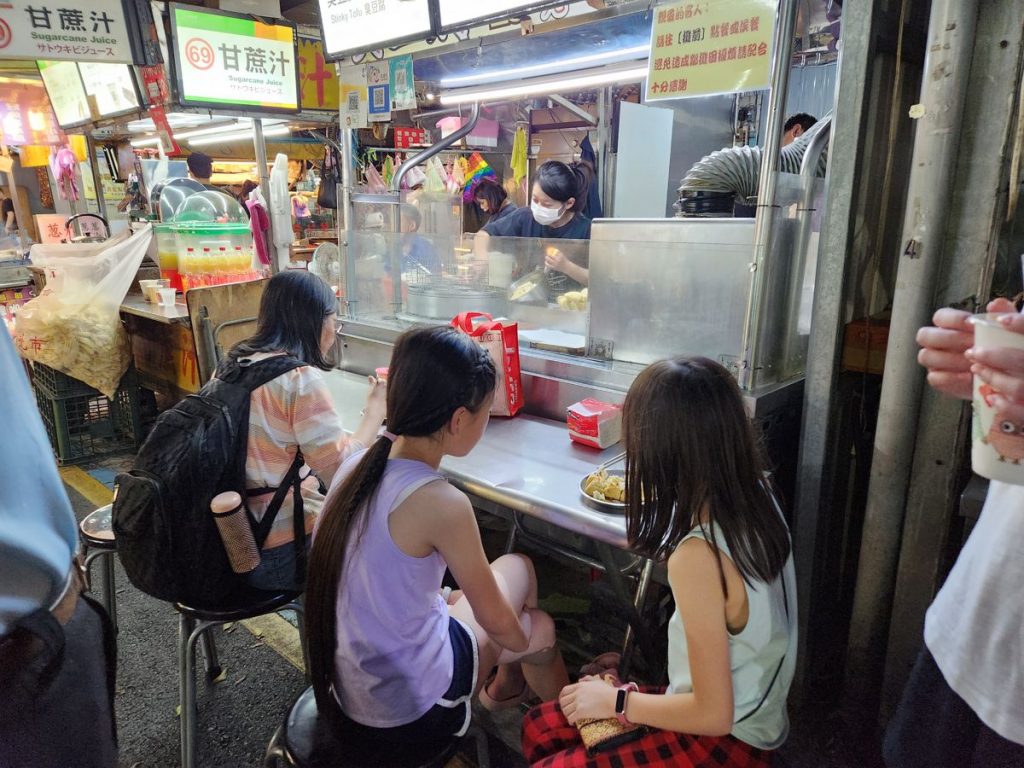
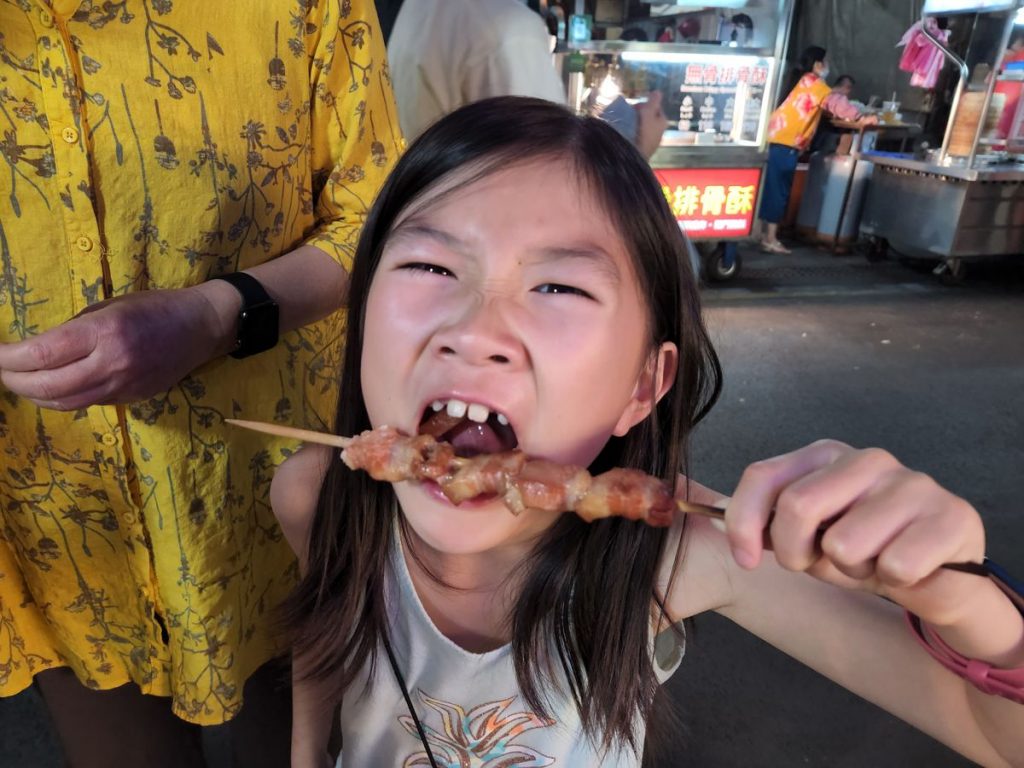
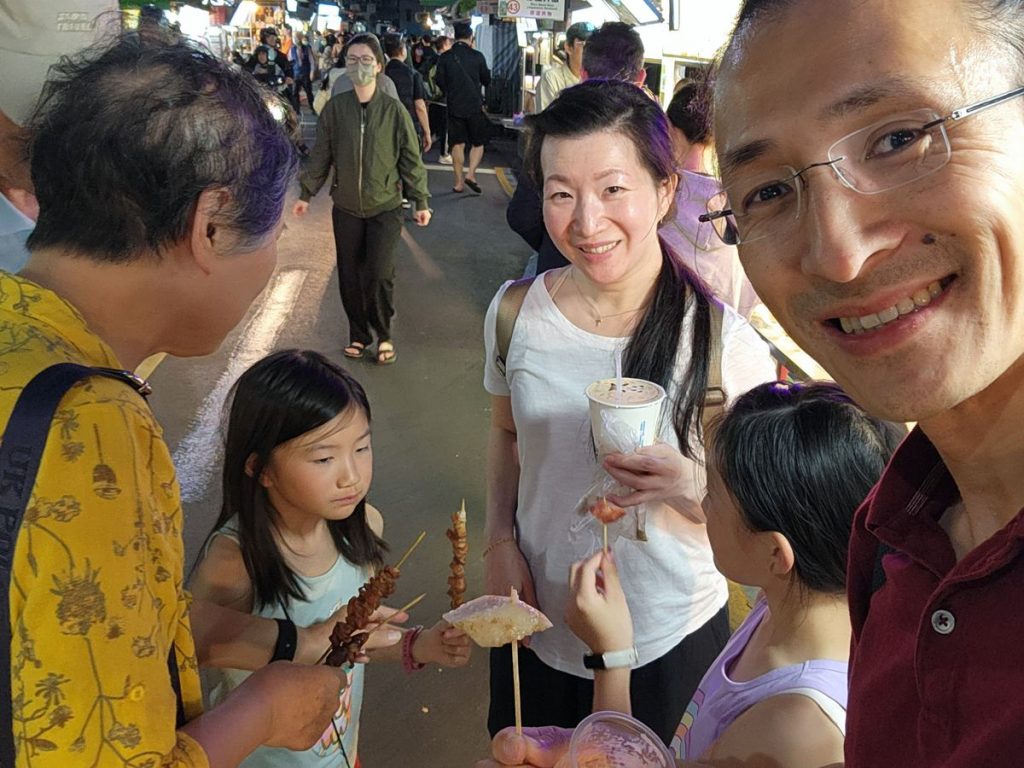


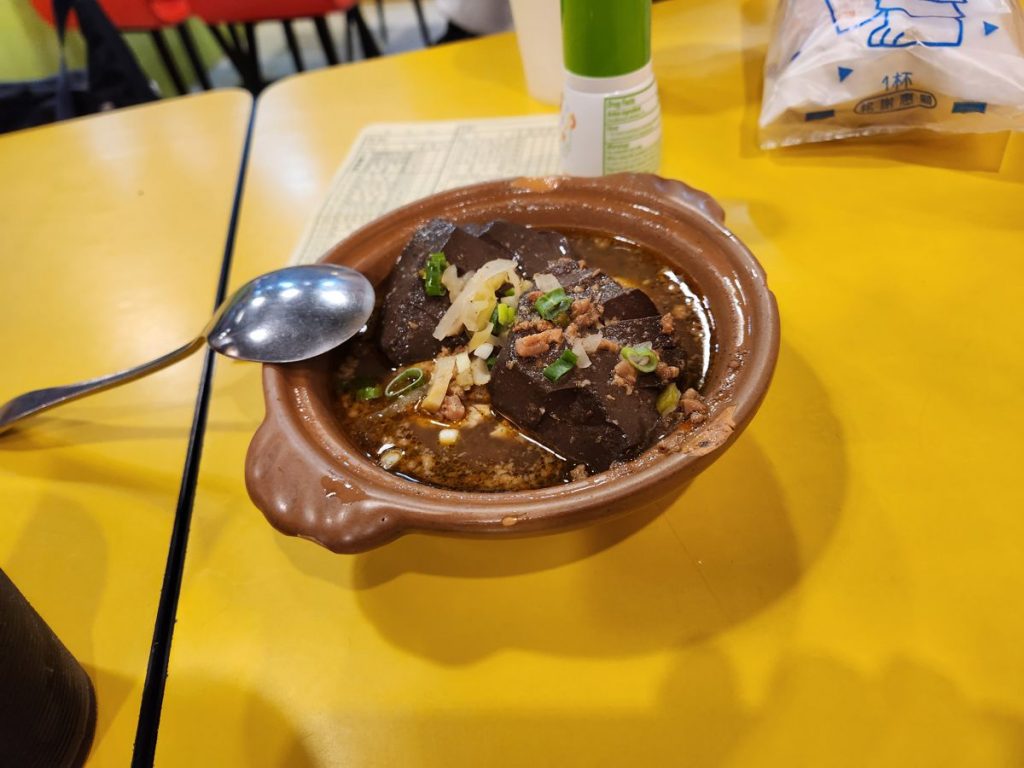

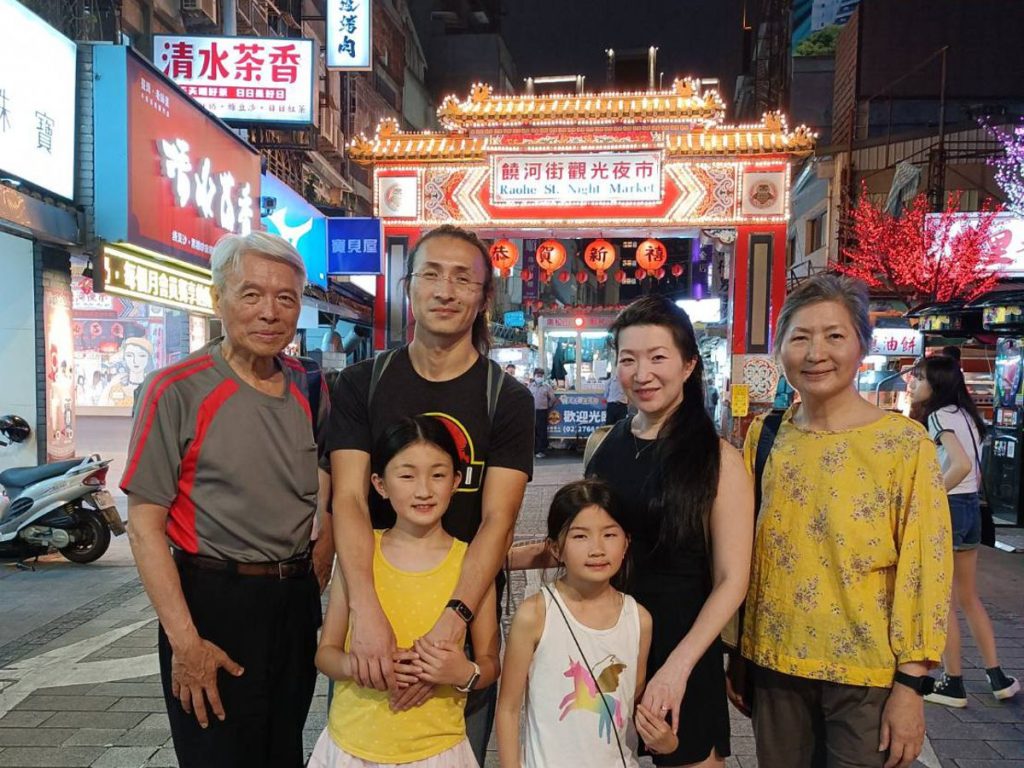
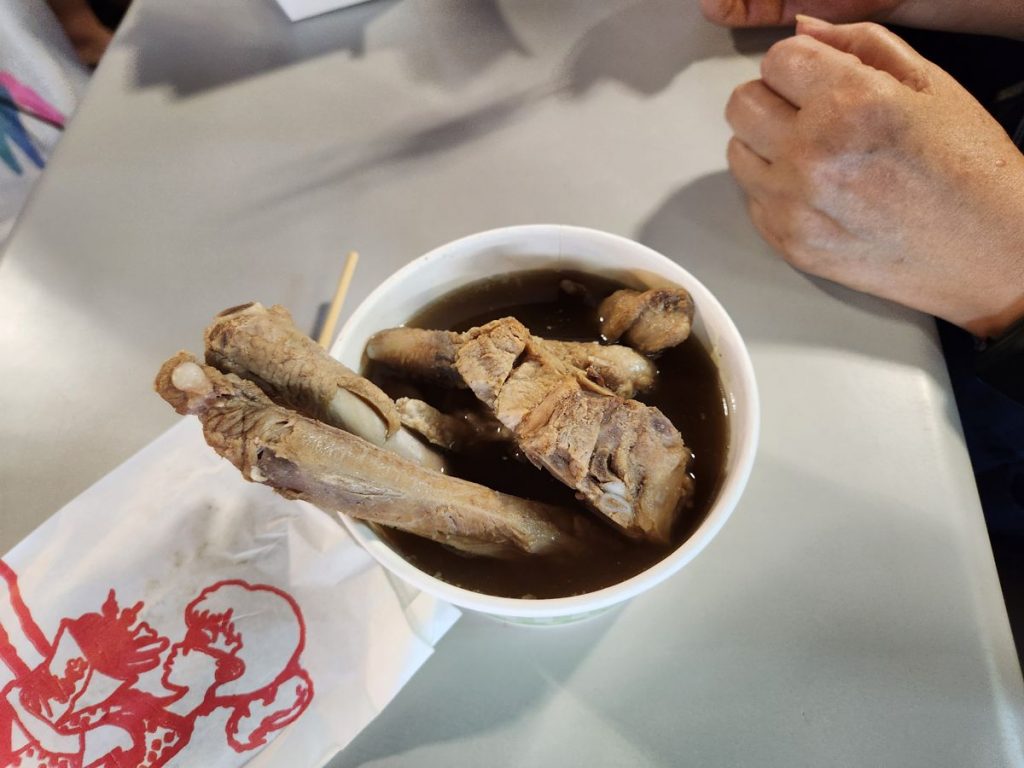
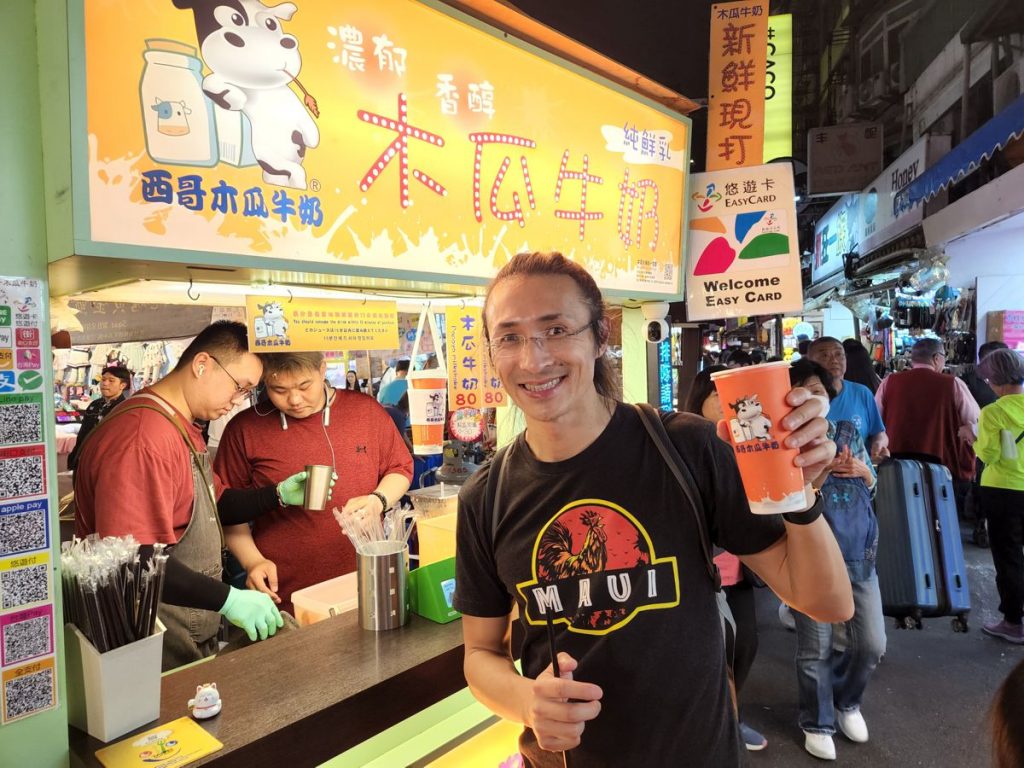


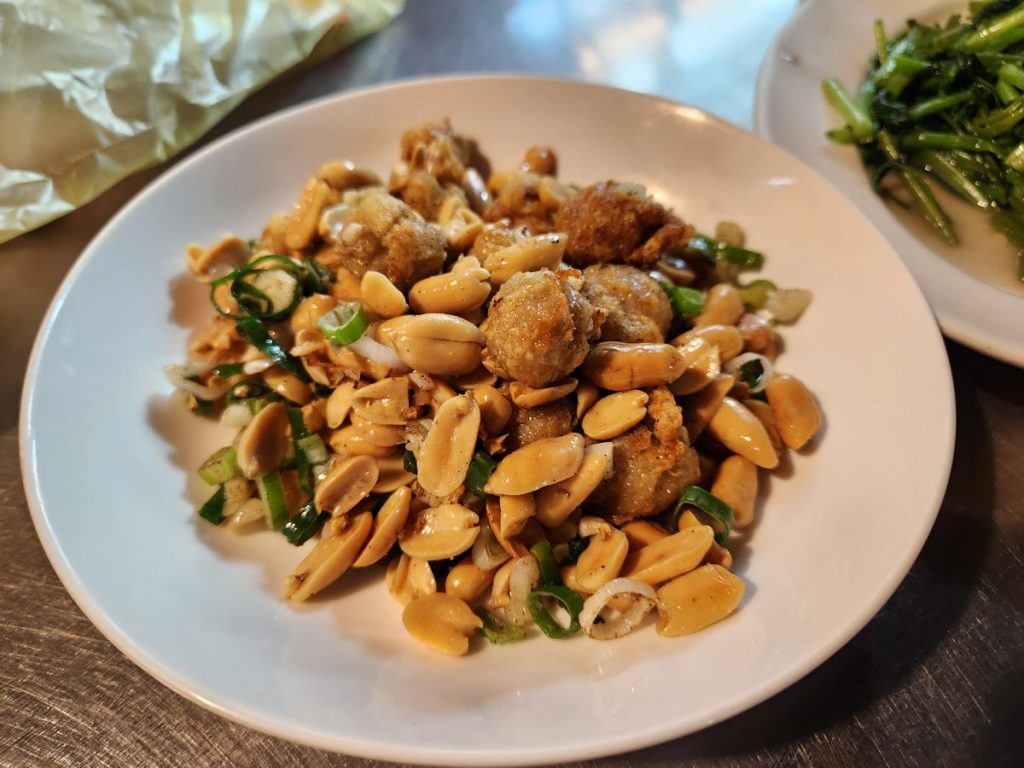

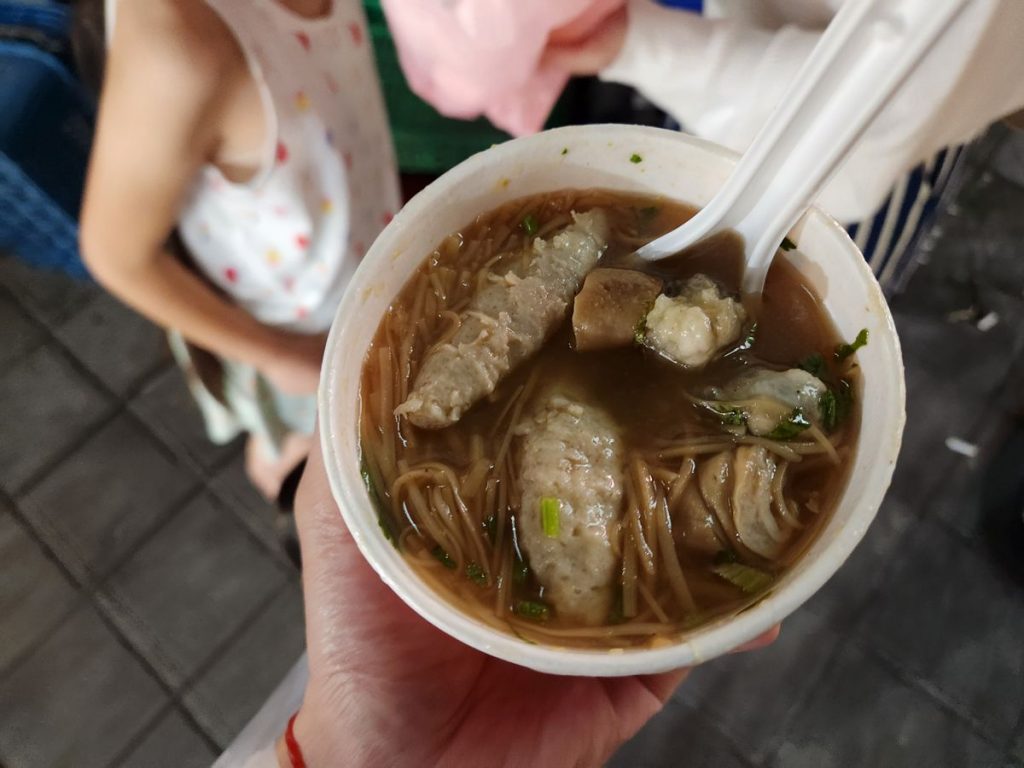

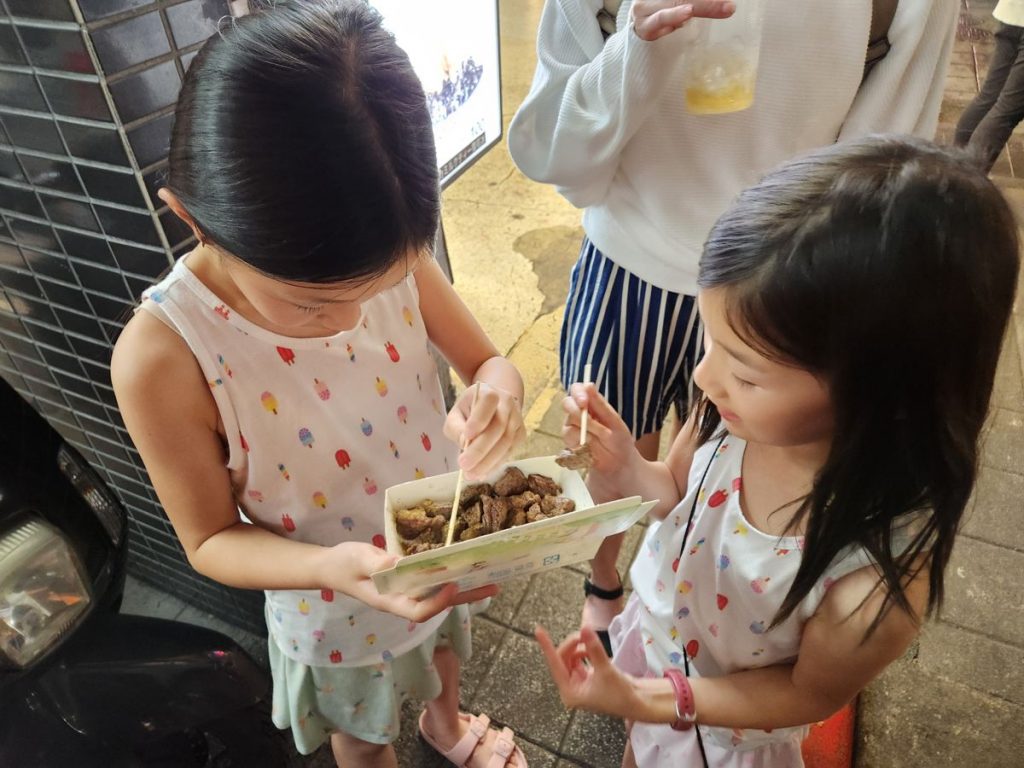
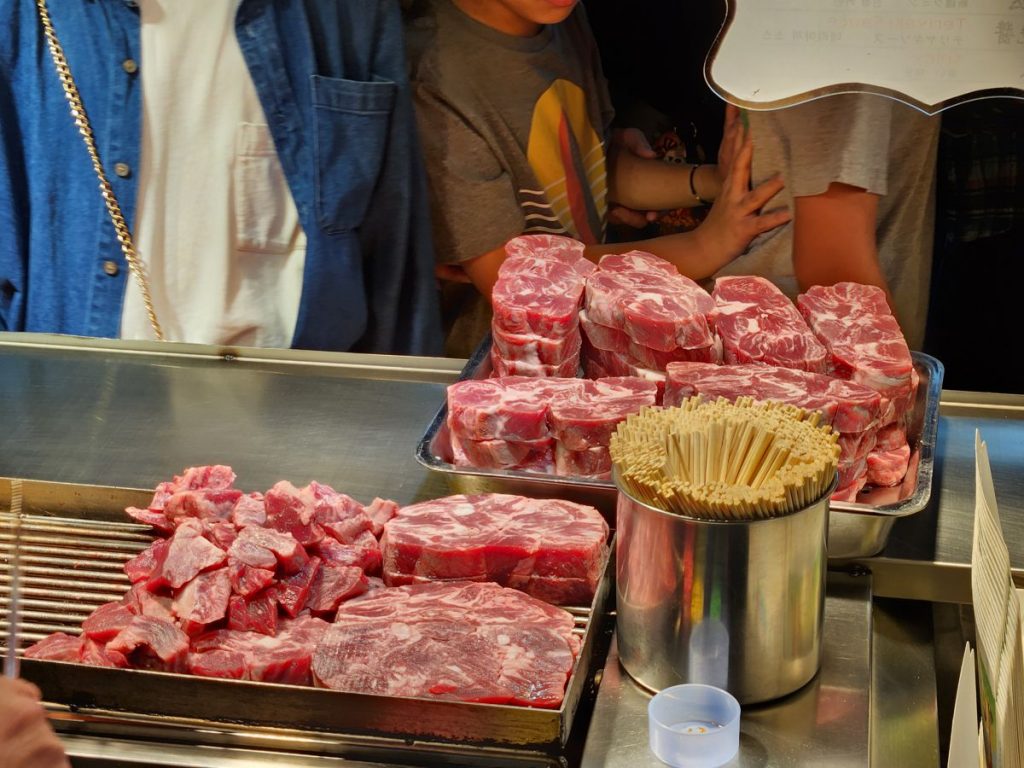
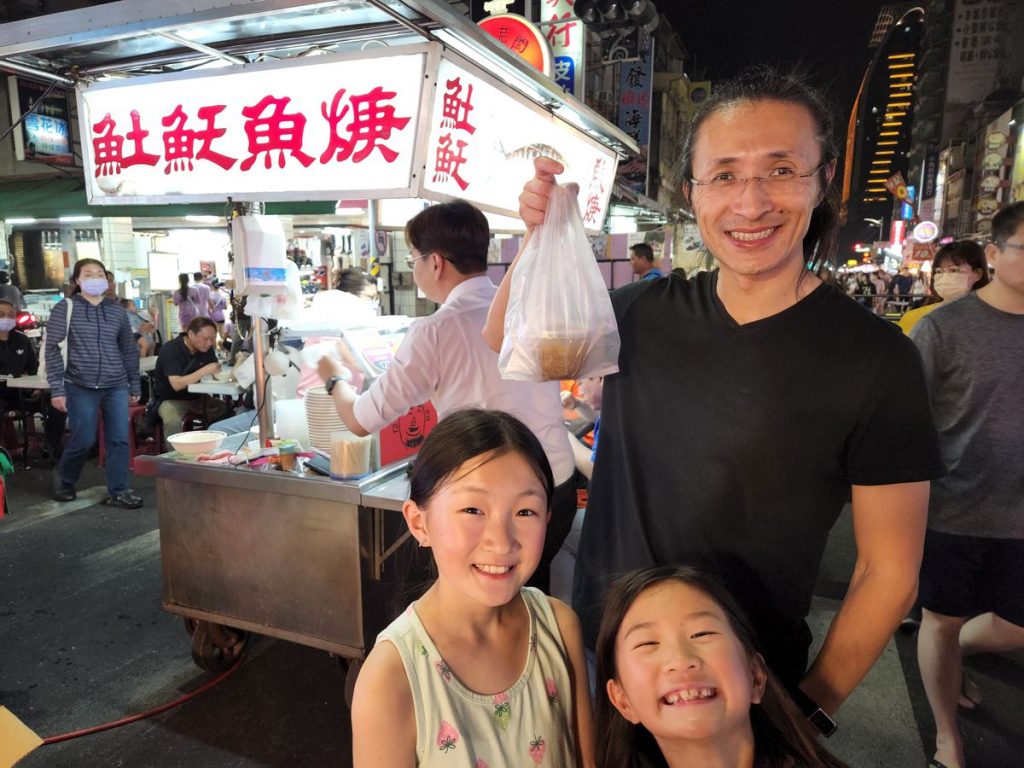
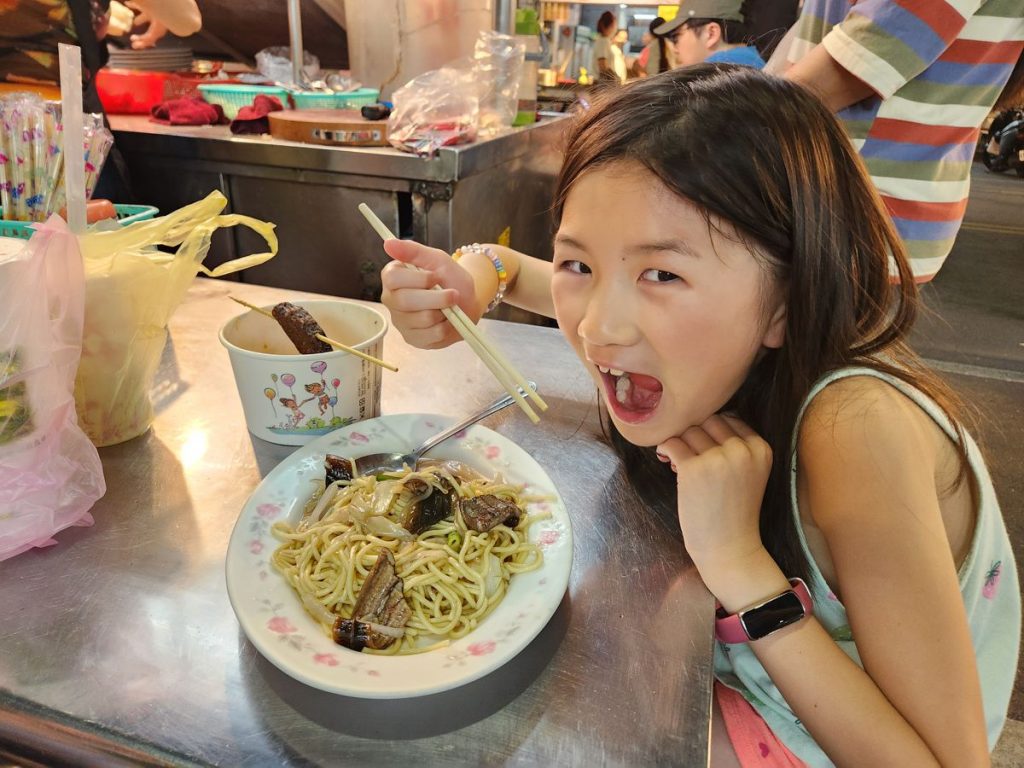
Desserts
The traditional desserts like 刨冰 bao bing (shaved ice), 燒仙草 shao xian cao (hot grass jelly), and 豆花 dou hua (silky tofu) are another must-have. The dessert shop near home would only cater the hot stuff in the winter and cold stuff in the summer, but on these spring days both were readily available. We definitely took advantage of that.
We also visited an ice cream shop with old school Taiwanese flavors like taro and longan. The kids sampled several ice pops from 7-Eleven.
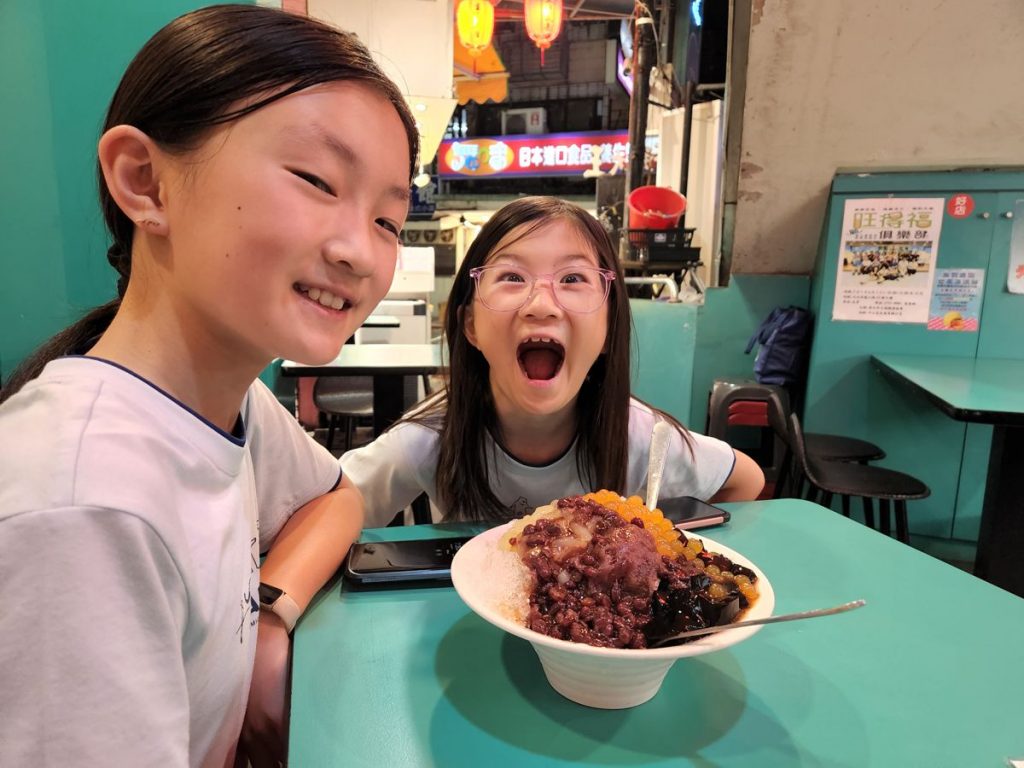

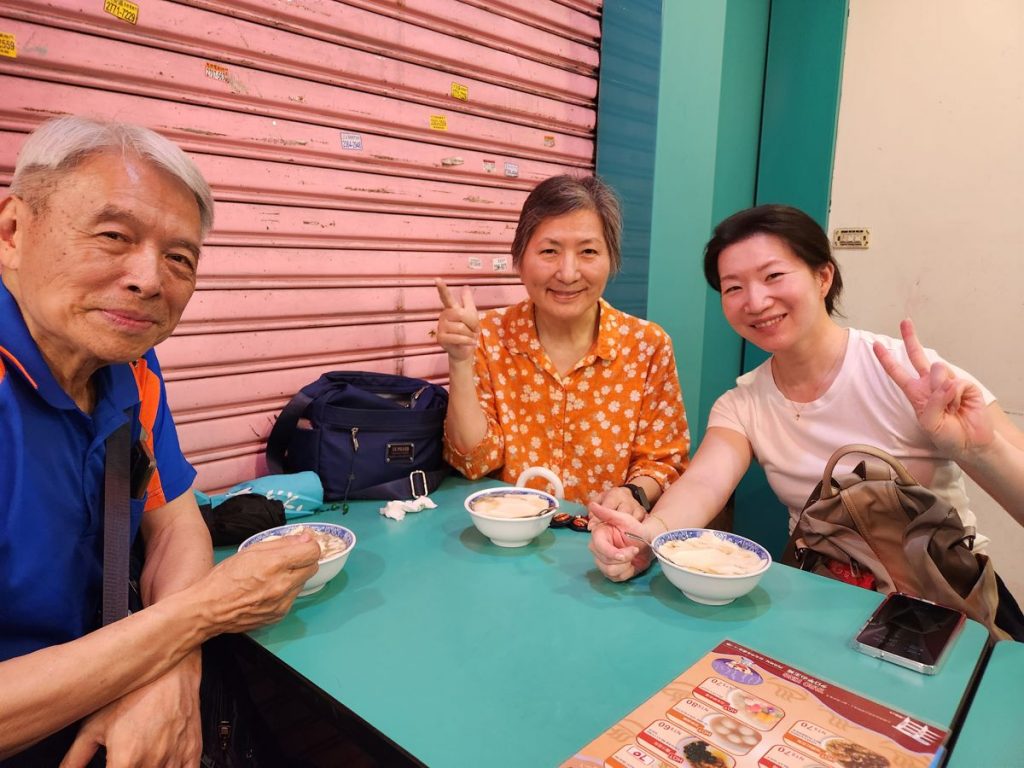
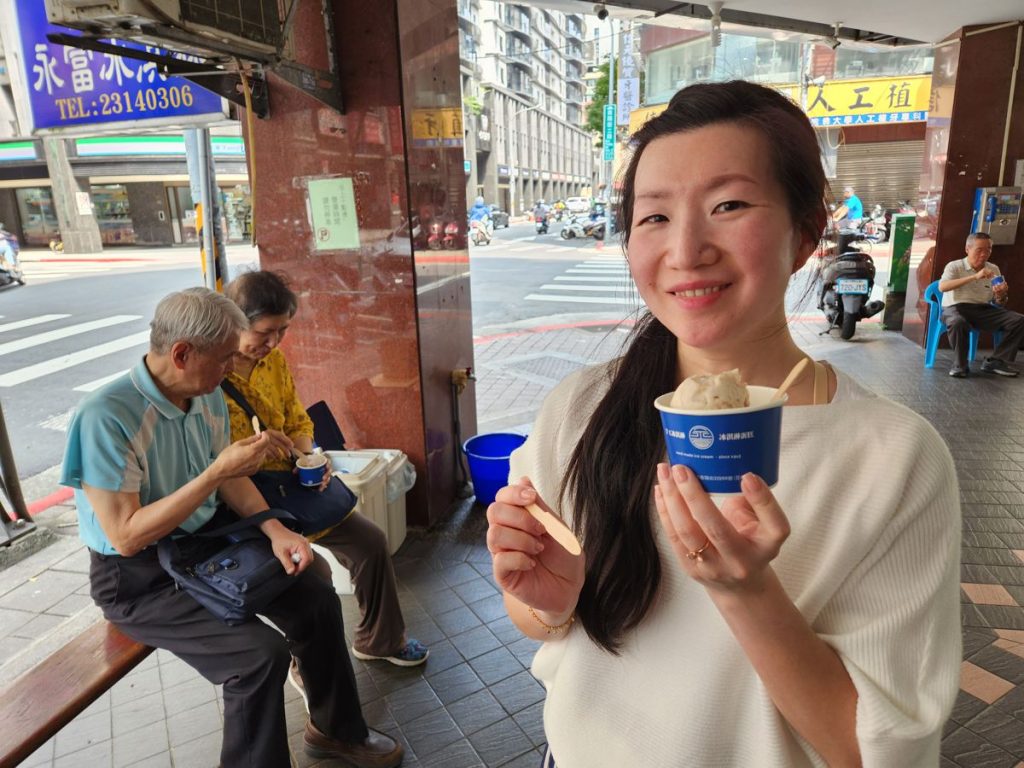

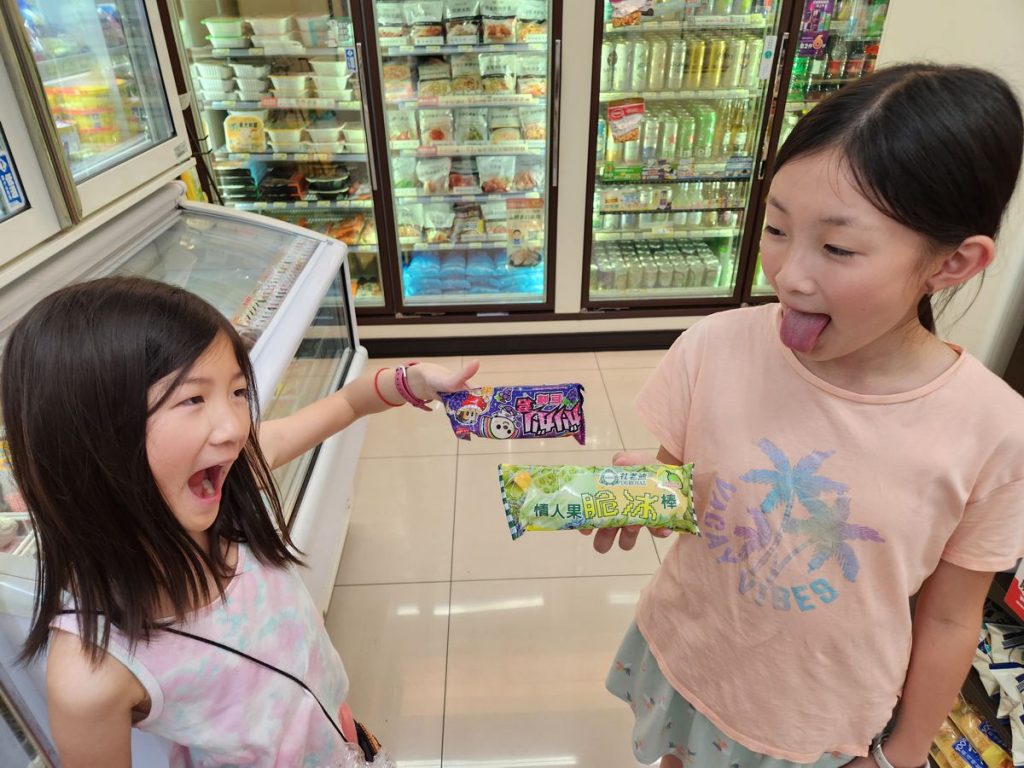
熱炒 Re Chao (“Hot Stir Fry”)
Re Chao is a category of casual dining establishments in Taiwan, often featuring seafood and having a grill on the side. Compared to other restaurants that more or less cook the same dishes, re chao joints tend to be more open hair, use below-IKEA grade of furniture and utensils, and have self-service rice and beverages.
I did not grow up with these places at all, but my mental association is large groups of working class people drinking and being loud. Like dive bars, kind of, but with a heavier emphasis on food because Taiwanese people don’t drink without good food. I have never been a fan of loud drunks, and the two re chao joints on my daily commute home from middle school weren’t attached with great memories. The old vegetarian me hated the fishy smell, and a bunch of hostile gangster students always hung out right on that street block.
Then, once in my 20s, I tried this styled dining with a group of friends. I don’t remember what exactly we ordered, and none of it was beyond typical home kitchen dishes, but the experience struck me as something I desperately needed in my life. Like the McDonald’s French fries, it’s really hard to beat delicious and affordable food in a relaxed atmosphere. Fast forward to this trip, I wanted to eat re chao again. These joints by the middle school, where I had so much and so little memory at the same time, turned out to be the perfect option.
We went to 一代佳人 Yi Dai Jia Ren per Ma’s speculative intuition of it being “better” of the two, though both had survived decades of direct competition from each other and enjoyed similarly positive reviews on Google Maps. We got a table on the balcony by ascending on some cheap industrial stairs. The space was in a permanently makeshift condition, and I’m inclined to think that it didn’t survive every typhoon season. Beer, soju, and a variety of soft drinks were available in a fridge in the corner, next to a handwritten note on a piece of cardboard pointing to the $0.50 per person all-you-can-eat white rice. We ordered eight dishes for the five of us and it turned out to be the perfect amount… I may have ended the night being a bit full, but there was no leftovers thanks to the modest portion size. And the food was excellent! Exactly what I wished for, and maybe more.
We were so happy with the meal that we went back to the same place a couple days later, just before our flight home. Ba joined us too so we had the ability to order even more. We ate like kings with a full table of different ingredients, flavors, and preparation methods. This time we even got a fish, which was among the day’s catch directly from the seaport, prominently on display by the sidewalk. Since Ma declined the honor of picking one, I got to demand the blue-orange parrot fish recognizable from aquariums. $20 for a whole steamed fish? Exotic looking and fresh off the boat? Hell yeah!
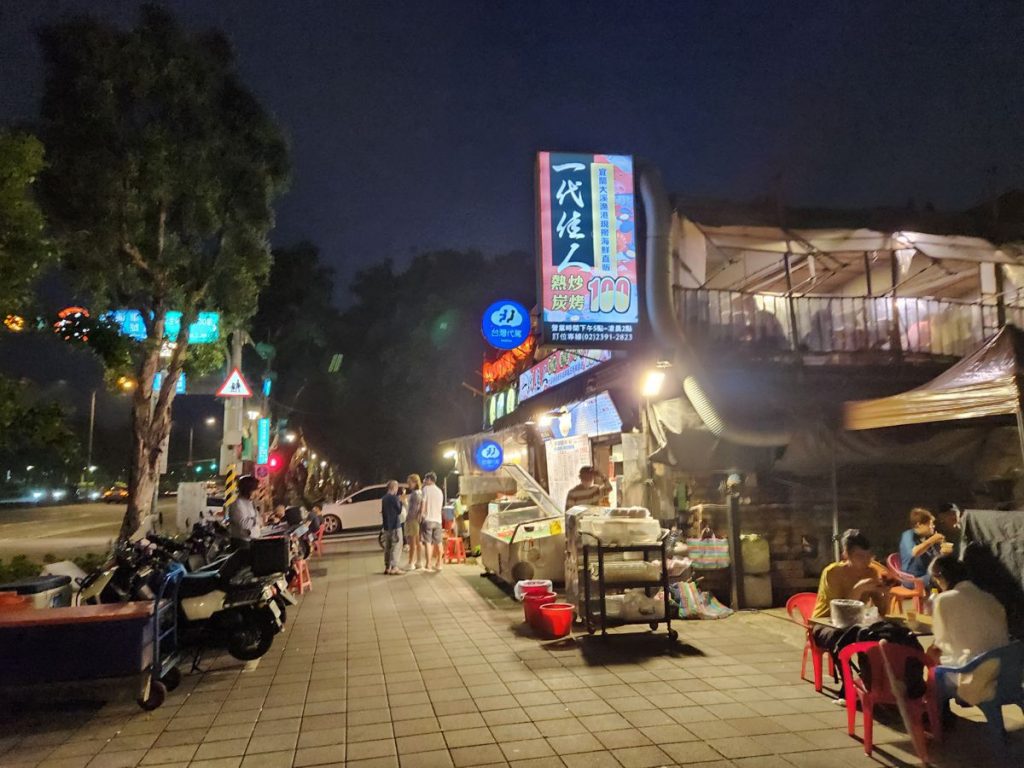
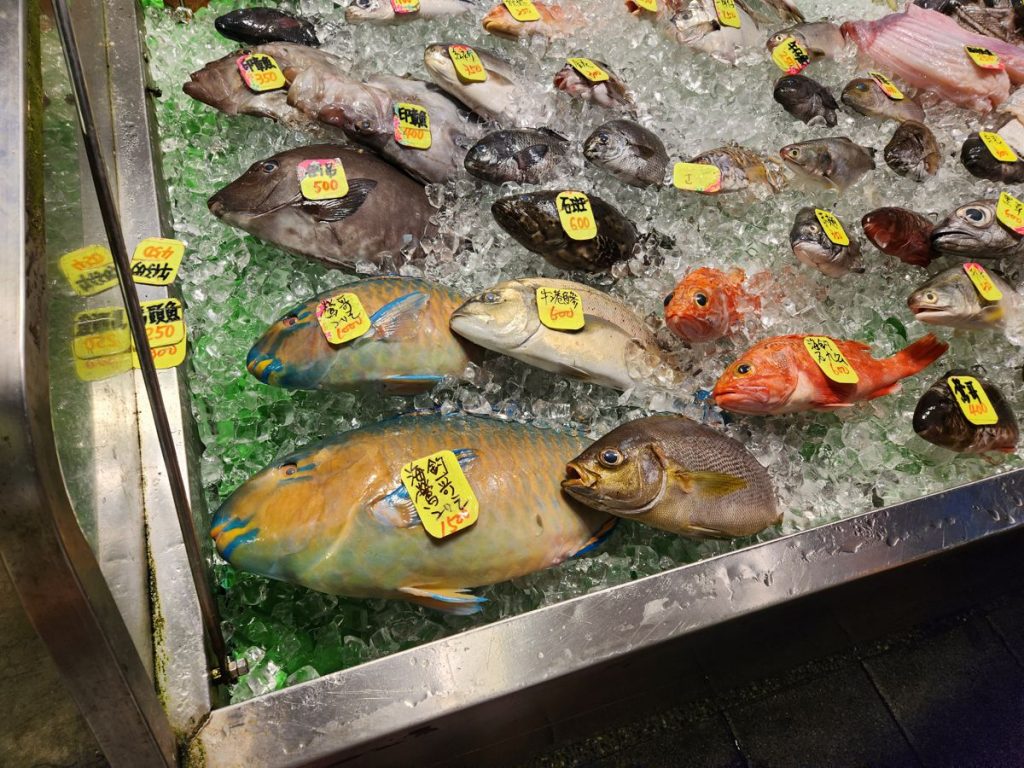

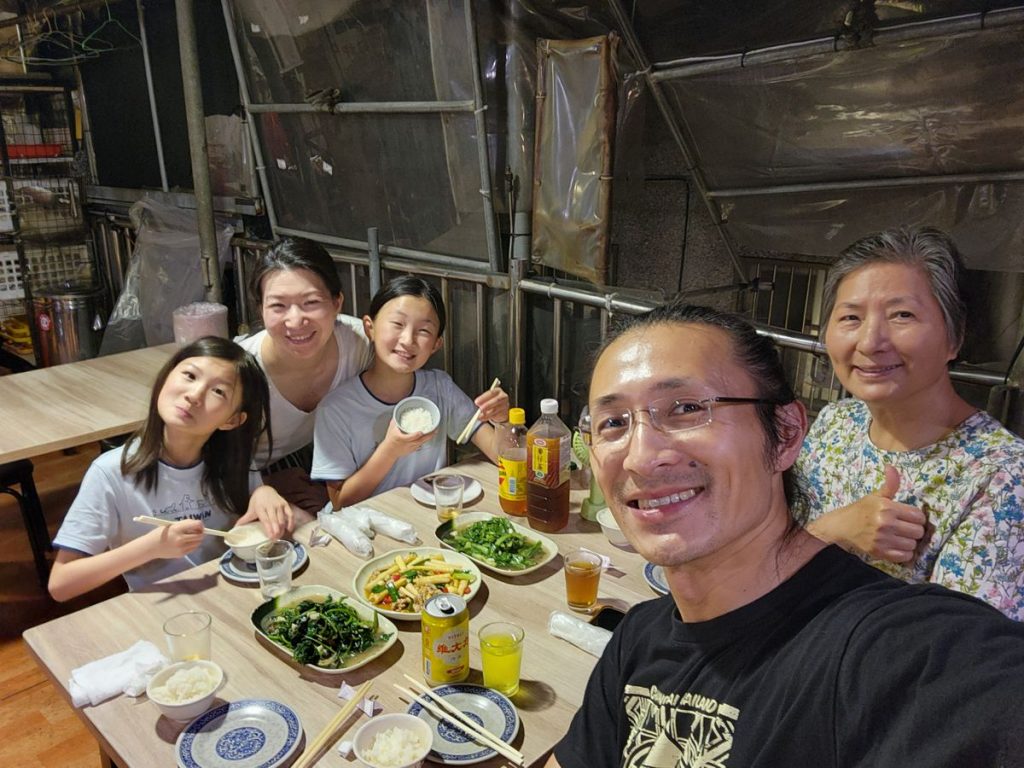





Other Mentions
We made a detour one day to eat Wenzhou styled wonton. It’s something Hong associated with Taiwan because her late grandpa loved it. We went to this place in 西門町 Xi Men Ding called 溫州大餛飩之家 Wen Zhou Da Huen Duen Zhi Jia because we thought it may have been “the most authentic” shop that grandpa took us to… though there was no way to confirm any more.
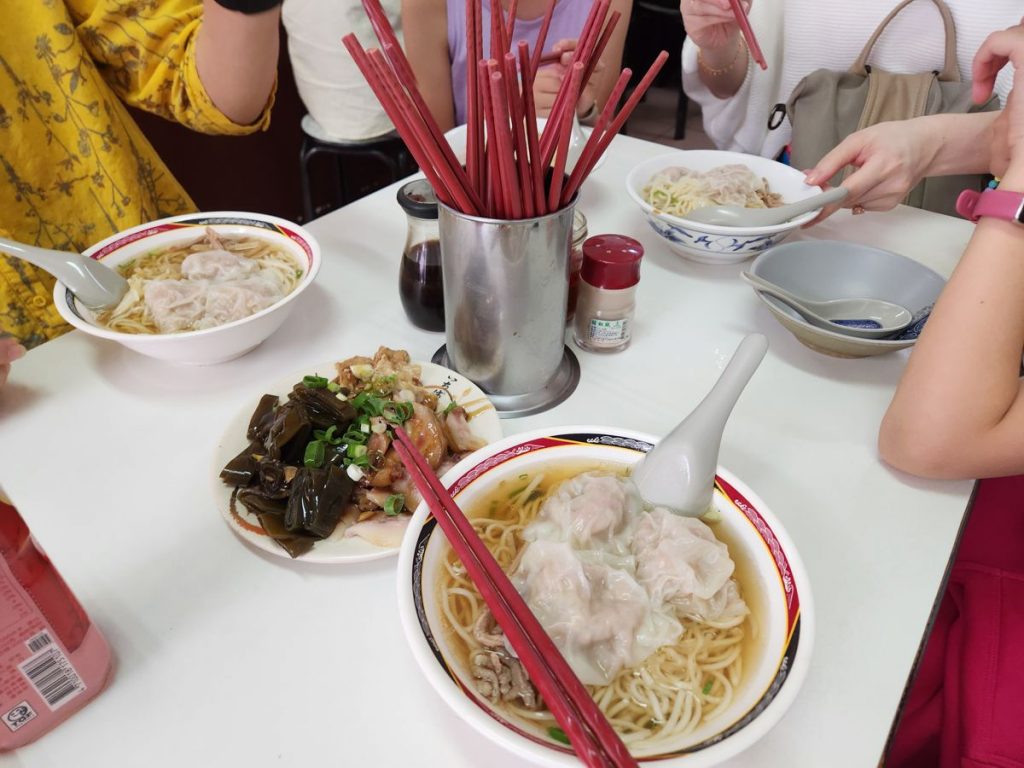
One evening, after dessert, I got a to-go order of beef noodle soup (the version without the beef, how I like it) from this shop called 中壢牛家莊 Zhong Li Niu Jia Zhuang. It used to be a small food stand alongside 永康牛肉麵 Yong Kang Beef Noodle Soup. While this business also managed to upgrade itself into a small restaurant, its relative popularity had been left in the dust by its former neighbor. But I love that I still got to try their food.

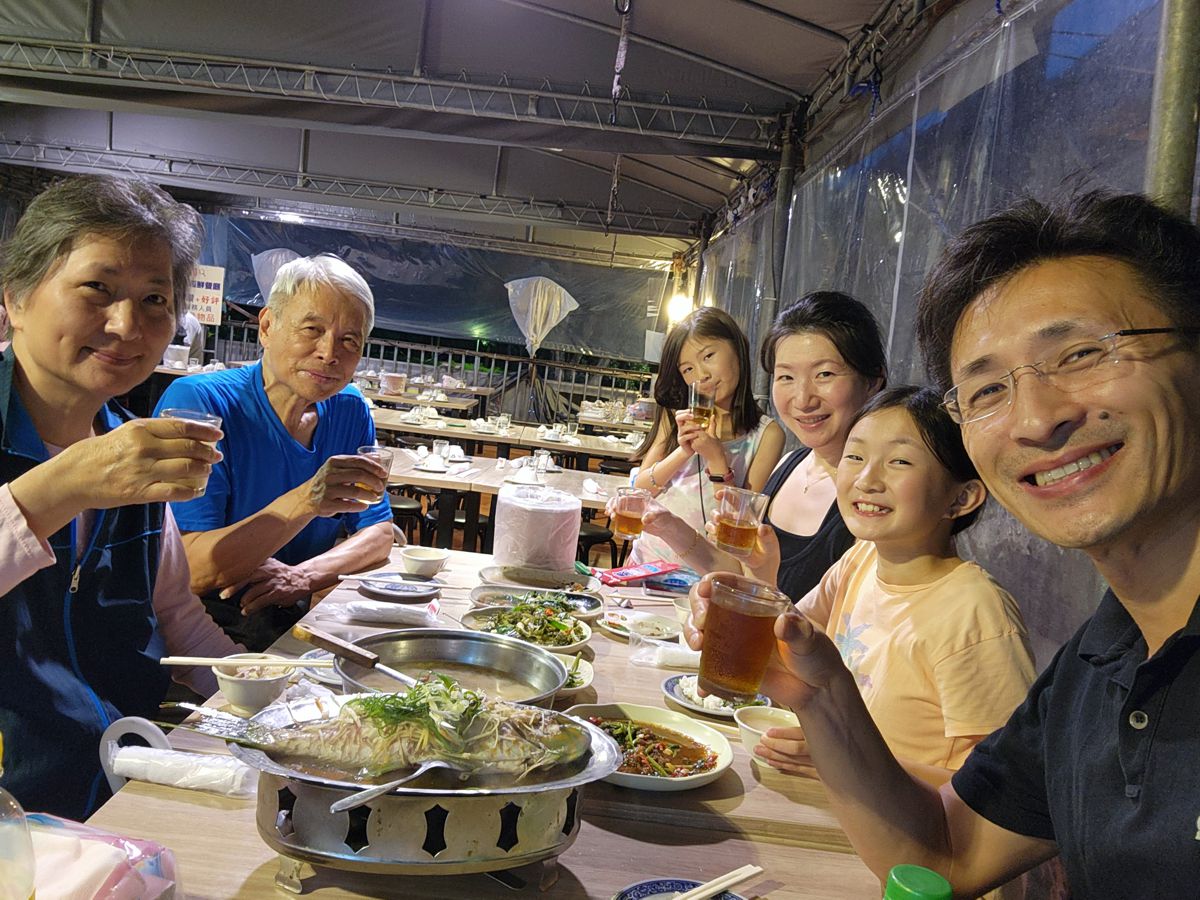
Taiwan 2024 (2/7) – Food Part 1 – Peter's Blog
April 27, 2024 at 7:08 pm[…] Food Part 2 […]
Taiwan 2024 (1/7) – Going Home for Spring Break – Peter's Blog
April 27, 2024 at 7:08 pm[…] Food Part 2 […]
Taiwan 2024 (5/7) – Hanfu – Peter's Blog
May 8, 2024 at 1:15 am[…] Food Part 2 […]